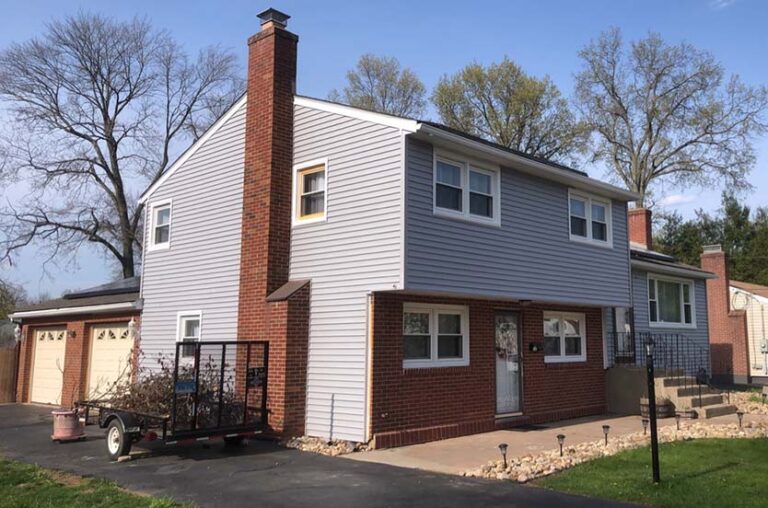
If you’re staining your deck, you’re probably wondering, how long does deck stain last? The truth is, it depends. Some deck stains wear off within a year, while others can last up to five years. Several factors influence how long a stain holds up, such as the type of product used, how it was applied, weather conditions, and ongoing maintenance.
This blog simplifies everything, helping you understand what affects your deck stain’s lifespan and how to make your effort last.
Understanding the different types of stains is the first step to knowing how long your deck stain will last. The three main categories are:
1. Transparent Stains
These clear or lightly tinted stains are mostly used for enhancing the natural beauty of wood grain.
♦ Expected Life: 1 to 2 years
♦ Best for: Premium woods such as cedar or redwood
♦ Downside: Minimal protection from UV rays and moisture
2. Semi-Transparent Stains
These stains add color but still allow the texture and pattern of the wood grain to remain visible.
♦ Expected Life: 2 to 3 years
♦ Best for: Homeowners who want a balance of appearance and protection
♦ Downside: Still fades faster than solid stains under direct sunlight
3. Solid Stains
These are opaque, more like paint, and provide the most surface protection.
♦ Expected Life: 3 to 5 years (or longer with proper care)
♦ Best for: Older decks or surfaces with imperfections
♦ Downside: Hides natural grain completely
Factors That Affect How Long Deck Stain Lasts
Even with high-quality stain, your deck’s exposure and treatment can shorten or extend its lifespan. Let’s break down the key variables:
1. Climate and Weather Exposure
Decks in extreme weather require more frequent maintenance.
♦ UV Radiation: Sunlight breaks down wood fibers and stain pigments.
♦ Rain and Snow: Increase the risk of mold, mildew, and peeling.
♦ Temperature Swings: Cause the wood to expand and contract, stressing the stain.
2. Type and Condition of the Wood
Not all wood absorbs stain the same way.
♦ Softwoods like pine are more absorbent, meaning stain fades faster.
♦ Hardwoods like mahogany or redwood can resist wear better but may need special preparation.
♦ Old weathered wood often requires deep cleaning and sanding to help stain stick.
3. Surface Preparation
Even the best stain won’t last if the surface underneath isn’t clean and ready.
♦ Cleaning: Remove all dirt, mold, and old stain or sealer before staining.
♦ Sanding: Smooth surfaces absorb stain more evenly.
♦ Drying: Excess moisture in the wood interferes with proper stain adhesion.
4. Quality of the Stain Product
Not all stains are equal.
♦ Cheap stains often fade faster due to lower pigment and resin content.
♦ Premium brands (like Cabot, Benjamin Moore Arborcoat, or Sherwin-Williams) offer better long-term protection.
♦ Look for: UV resistance, water repellency, and mold inhibitors on the label.
5. Application Method
How you apply the stain plays a big role in how long it lasts.
♦ Brush application allows stain to penetrate more deeply than spraying.
♦ Avoid over-applying: excess stain can form a film that peels.
♦ Ideal temperatures: Between 50°F and 80°F, with no rain expected for at least 24 hours.

Common Signs That Your Deck Stain Is Failing
Recognizing wear early lets your re-stain before major damage occurs.
1. Fading Color
The deck looks dull or gray, especially in high-traffic or sun-exposed areas.
2. Water Absorption
Sprinkle water on the deck. When water doesn’t bead up and just sinks in, your deck’s protective layer is gone.
3. Peeling or Flaking
A clear sign the stain is losing adhesion, usually due to moisture getting underneath.
4. Mold or Mildew
Discoloration and spots are not just ugly. They mean the stain has lost its moisture barrier.
How to Extend the Life of Your Deck Stain?
Now that you understand what affects how long deck stain lasts, here’s how to make it last even longer:
1. Annual Cleaning
Cleaning your deck at least once a year keeps dirt and mold from breaking down the stain. To remove mildew, apply a deck cleaner or a solution made of equal parts water and white vinegar. Rinse thoroughly and let it dry.
2. Spot Maintenance
Instead of re-staining the whole deck, touch up high-traffic zones or sun-exposed planks as needed. This extends the time between full re-stains.
3. Reapply a Light Maintenance Coat
Every 1–2 years, apply a thin layer of the same stain (if compatible) after cleaning. This rejuvenates color and adds a protective layer without full prep.
4. Seal the Edges
Moisture often enters at the end grains. Applying extra stain to edges and joints helps prevent early wear.
We’re Just a Call Away. Let’s Talk About Your Next Project
Deck Stain vs. Paint: Which Lasts Longer?
Some homeowners consider painting instead of staining. Here’s how the two compare:
Feature
Deck Stain
Deck Paint
While paint may last longer, it’s also more likely to peel or crack, making reapplication more labor-intensive. Choose stain if you want to highlight the wood’s natural grain and make future touch-ups easier.
Seasonal Deck Stain Maintenance Checklist
Here’s a quick seasonal checklist to help your stain last longer:
Spring:
♦ Inspect for peeling or mildew
♦ Clean deck with appropriate cleaner
♦ Lightly sand any rough spots
Summer:
♦ Re-stain faded sections if needed
♦ Apply maintenance coat if due
Fall:
♦ Remove leaves and debris promptly
♦ Ensure water is draining off deck properly
Winter:
♦ Avoid heavy snow buildup
♦ Don’t use salt-based ice melt on wood
How Often Should You Re-Stain a Deck?
Stain Type
Re-staining Frequency
Conclusion
So, how long does deck stain last? In most cases, between 1 and 5 years, depending on the type of stain, your deck’s exposure, the quality of the product, and how well you maintain it.
If you want to maximize the lifespan
♦ Choose the right stain for your wood.
♦ Prep the surface thoroughly.
♦ Apply it in proper conditions.
♦ Perform regular cleaning and spot touch-ups.
Deck stain isn’t permanent, but with a smart approach, you won’t be re-staining every year. And when your deck looks great and holds up through the seasons, the effort is always worth it.




